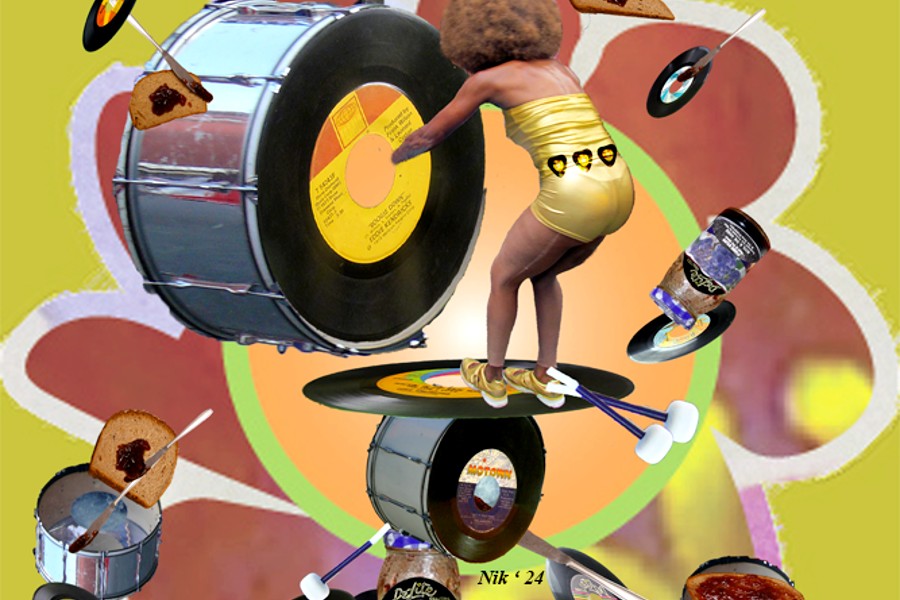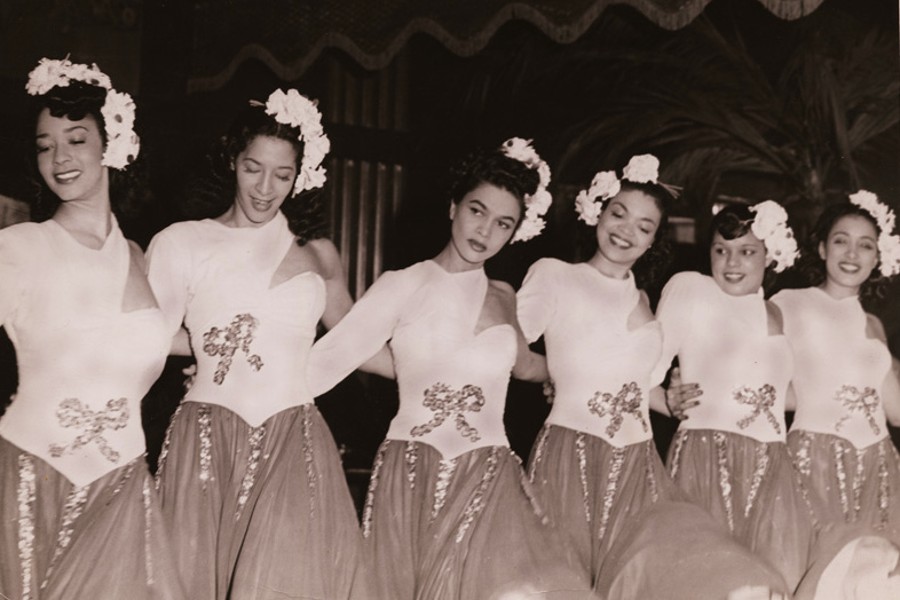The Harlem born visual artist whose work is in the upcoming Harlem Art Walking Tour 2012 in October as she shoots her art, defines what Harlem is and knows that Harlem isn’t discovered in her world of Harlem. Here, the artist talks about Muslim women, nudity, gentrification, the Young Lords and the best Puerto Rican coffee in Harlem.
Harlem World Magazine: Where were you born and raised?
Allicette Torres: Born in Harlem and raised in Puerto Rico.
AT: My father was the first source of inspiration. He was a Young Lord in the 70’s. He taught me about my humanity, being Puerto Rican and even laid the foundation for the awareness that would lead to aspects of my feminism. He shaped the fundamental ideal that permeates my work. It’s a simple, yet profound, idea stretching from West Africa—Sankofa. It means, it is not taboo to go back and fetch what you forgot. My father and the philosophy of Sankofa has taught me we People of Color need to go back, be angry, be forgiving, demand a reckoning, grow and move forward. And above all we must begin to love ourselves.
AT: My art studio has been in central Harlem for 12 years. I have lived in Harlem 15 years. And for the record, I have no intention of working or living anywhere else (so long as funds allow).
HW: There are 80 visual artists in the Harlem Art Walk Tour, are a lot of visual artists moving up to Harlem?
AT: This is a bit of a complex question. A good portion of the artist in the Harlem Art Walking Tour are life long residents; another large contingency are artist who have been here at least a decade. The smallest group are the new artists. It grates me how people have the assumption there is a sudden boom of artists in Harlem. It isn’t necessarily the case. And, of course, it would be ridiculous to not understand there has been some growth. But the art world I live in has been here long before I arrived. And to finish this question on a bit of an aggressive note; Harlem and it’s artists shouldn’t be thought of as new or being “discovered”. Did the Spaniards “discover” the New World. No, they didn’t. They just decide to sail over to their version of Uptown and claimed it as new. This art community is not faddish. The art has been here before us and will be here after us. Harlem is.
AT: I don’t think I decided to become an artist. What happened was this click of awareness. I was working on my Masters in Latin American Studies when I understood I could have a broader conversation with the world using art as a language.
AT: I do not make self-portraits. I use friends and models as the foundation for the topics I want to narrate about. I do not use myself as a model (at least for the time being) because I think it becomes too specific with people more interested in you as a person being nude versus what you are trying to communicate. Most of the people in my work are nude because I believe clothing makes us date a time and limits our viewing of the idea. Removing the clothing is a way of going back to the source of something, the natural state if you will.
AT: Viewers have a hard time with my work. Mostly because a large portion of the work is nude. They quickly presume nakedness equals sexual or dirty. Also, people can have this preconceived notion of what a Puerto Rican, and by extension Latinos and People of Color, should depict as art. I’ve been told, “I thought you would have lovely beach scenes” or “I thought you might have photographed gangs in Spanish Harlem, your father was a Young Lord was he not?” Sometimes I have a narrow lens with my art and have dealt with topics such as the legacy that has happened to us as people of color in Latin America and the conquest. I have also confronted the gentrification of Harlem. But also in a broader mode I analyze our duality and legacy, one foot in the present and one in the past. Being from one place and living in another. Existing on the outside and having to look at the inside you may not be able to participate in. My latest body of work explores the oppression towards Muslim women by France because they might choose to wear hajibs, burqas or head scarves. This series, “Liberation through Oppression” with been exhibited in France March 2013. I suspect it will not go over too well with the French. And you know what? That is alright with me.
AT: I adore the waterfall in Morningside Park. I love also love the pageantry of women in their traditional dresses and head wraps walking though Le Petit Senegal (Little Senegal) that crosses 116th Street and Fredrick Douglass. My favorite house in all of New York (an English Tudor Style brownstone), located at 339 Convent Avenue in Sugar Hill. It will make you fall in love with it on the spot. In Spanish Harlem, Patsy’s pizza (75 years strong). Also, the tiny bakery on 116th and 3rd that makes the best Puerto Rican coffee in Harlem. And I can’t finish without mentioning one last place that no longer exists, it was called Pan Pan’s. It was the best chicken and waffle place in Harlem as far as I’m concerned. I still wake up some Sundays craving that chicken and those waffles.
HW: Used to love Pan Pan on 135th Street and Adam Clayton Powell (across from the hospital).
AT: That’s it.
HW: What is your website address?
AT: My url is http://www.blue7.com.
HW: Thank you
AT: Thank you for this opportunity.
Photo credit: 1) By Allicette Torres

Become a Harlem Insider!
By submitting this form, you are consenting to receive marketing emails from: Harlem World Magazine, 2521 1/2 west 42nd street, Los Angeles, CA, 90008, https://www.harlemworldmagazine.com. You can revoke your consent to receive emails at any time by using the SafeUnsubscribe® link, found at the bottom of every email. Emails are serviced by Constant Contact









